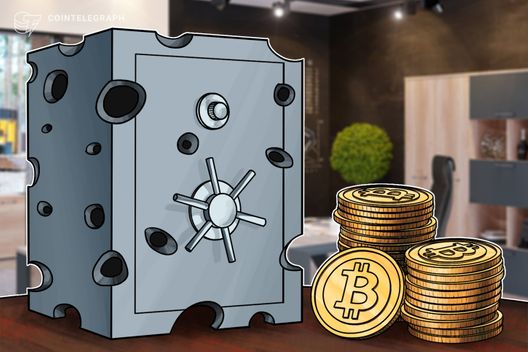US wholesale CBDC has ‘promise,’ Fed governor says, but retail ‘difficult to imagine’
Federal Reserve Board governor Michelle Bowman discussed a potential U.S. CBDC in a speech at Georgetown University.
373 Total views
12 Total shares

Own this piece of history
Collect this article as an NFT
United States Federal Reserve Board governor Michelle Bowman spoke at Georgetown University on April 18 to “offer a perspective” on central bank digital currency (CBDC). The Fed plays an important role in the conversation about CBDC, Bowman said. Her examination of the problems a CBDC might solve and the design and policy issues it entails showed little enthusiasm.
Bowman expressed doubt about the need for a CBDC to improve the payment system or its ability to enhance financial inclusion in the United States. A CBDC would have to beat the performance of the new FedNow system to earn a place on the market, and the 4.5% of Americans who do not have bank accounts are unlikely to want to use a CBDC. Bowman added:
“Unbanked households are also less likely to own mobile phones or have access to the internet, which would present barriers to CBDC adoption.”
Bowman also took a dim view of CBDC as an implement of policy. She saw the programmability of a CBDC as a “stark contrast to the flexibility and freedom embedded in physical currency or bank deposits” that could be misused. Furthermore:
“There is also a risk that this type of control could lead to the politicization of the payments system and at its heart, how money is used. A CBDC that permitted this type of control […] Could also threaten the Federal Reserve’s independence.”
— Federal Reserve (@federalreserve) April 18, 2023
Fear of the unknown colored several of Bowman’s conclusions. Cross-border payments would require a regulatory framework to be created, stablecoin may provide an alternative, depending on future legislation, and user privacy could be at risk from CBDCs, she said, without much further consideration. Newly announced U.S. stablecoin legislation would give the Fed control over non-bank stablecoin issuers.
Related: Bank of England preparing for greater role of tokenization in finance, official says
Repeating an argument made by her colleague Christopher Waller, Bowman dismissed claims that a CBDC would reinforce the U.S. dollar’s place in the international economy with the argument that the dollar’s role internationally is due to factors like the size of the U.S. economy, the strength of its institutions and other things a CBDC would not affect.
“We should ask ‘what current frictions exist or may emerge in the payment system that only a CBDC can solve, or that a CBDC can solve most efficiently?’” Bowman said. She concluded that there was little to recommend a retail CBDC:
“It is difficult to imagine a world where the tradeoffs between benefits and unintended consequences could justify a direct access CBDC for uses beyond interbank and wholesale transactions.”
She acknowledged some promise for wholesale CBDC, however, for some large transactions and international payments processing.
Magazine: China’s Digital Yuan Is an Economic Cyberweapon, and the US Is Disarming









